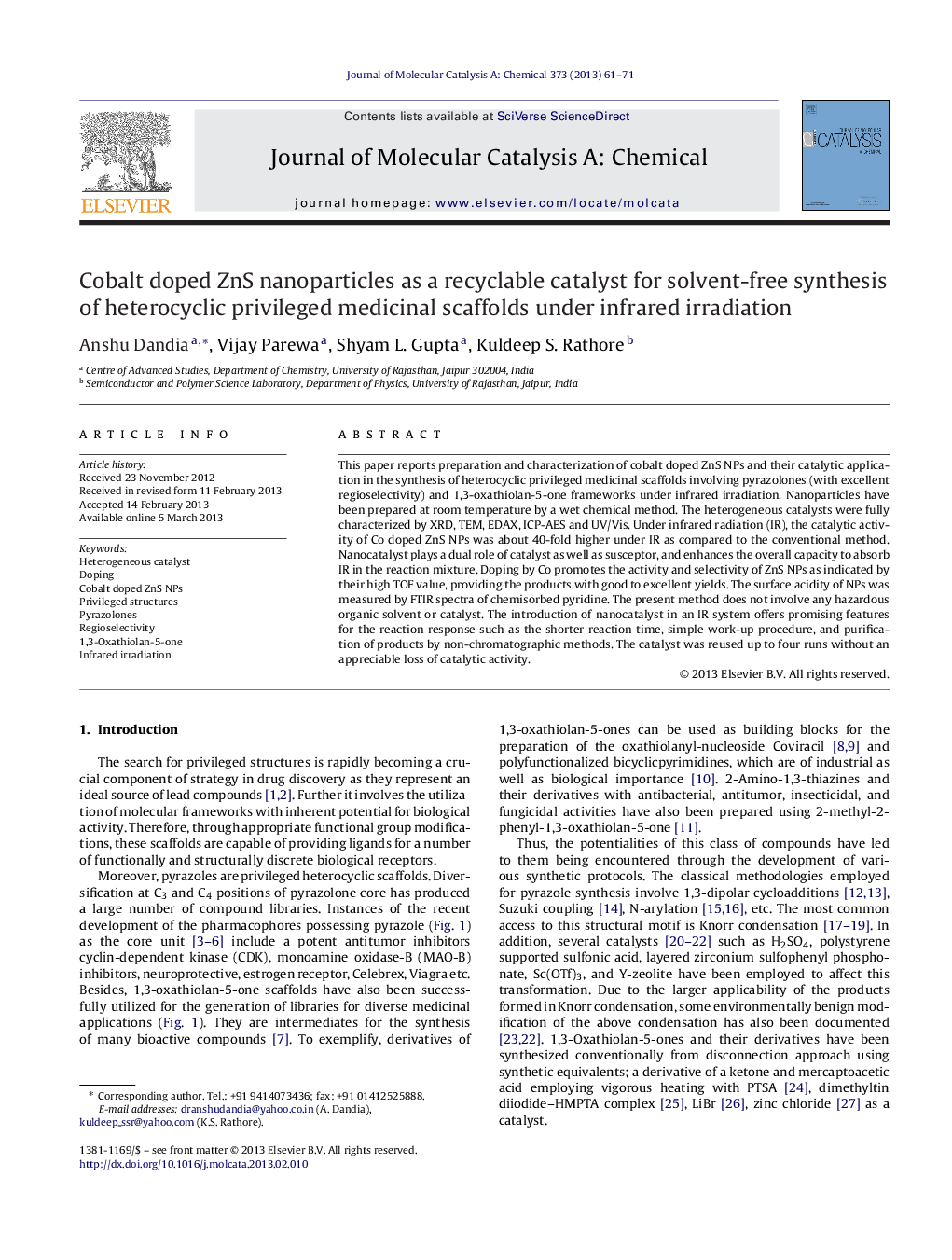| Article ID | Journal | Published Year | Pages | File Type |
|---|---|---|---|---|
| 65840 | Journal of Molecular Catalysis A: Chemical | 2013 | 11 Pages |
This paper reports preparation and characterization of cobalt doped ZnS NPs and their catalytic application in the synthesis of heterocyclic privileged medicinal scaffolds involving pyrazolones (with excellent regioselectivity) and 1,3-oxathiolan-5-one frameworks under infrared irradiation. Nanoparticles have been prepared at room temperature by a wet chemical method. The heterogeneous catalysts were fully characterized by XRD, TEM, EDAX, ICP-AES and UV/Vis. Under infrared radiation (IR), the catalytic activity of Co doped ZnS NPs was about 40-fold higher under IR as compared to the conventional method. Nanocatalyst plays a dual role of catalyst as well as susceptor, and enhances the overall capacity to absorb IR in the reaction mixture. Doping by Co promotes the activity and selectivity of ZnS NPs as indicated by their high TOF value, providing the products with good to excellent yields. The surface acidity of NPs was measured by FTIR spectra of chemisorbed pyridine. The present method does not involve any hazardous organic solvent or catalyst. The introduction of nanocatalyst in an IR system offers promising features for the reaction response such as the shorter reaction time, simple work-up procedure, and purification of products by non-chromatographic methods. The catalyst was reused up to four runs without an appreciable loss of catalytic activity.
Graphical abstractFigure optionsDownload full-size imageDownload high-quality image (86 K)Download as PowerPoint slideHighlights► ZnS and Co doped ZnS NPs through the wet chemical method (particle size 5 nm and 4 nm respectively). ► Nanocatalyst can play a dual role of catalyst as well as susceptor. ► Doping of Co promotes the activity and selectivity of ZnS NPs. ► Synthesis of pyrazolones (with excellent regioselectivity) and 1,3-oxathiolan-5-one frameworks. ► High catalytic activity in terms of TOF by Co doping could be attributed to an increase of surface acidity.
